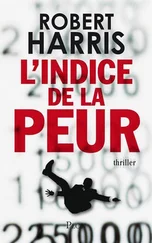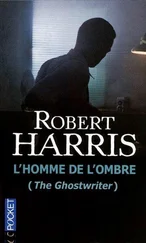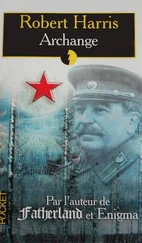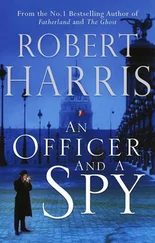As a journalist, Heidemann was a curious amalgam of strengths and weaknesses. In research he was indefatigable, hunting down documents and interviewees with a dogged persistence which earned him the title ‘der Spürhund’ – the Bloodhound. His approach was uncritical and indirect. He flattered and insinuated and was often rewarded with the sort of confidences that a more aggressive approach would have failed to solicit. But this tendency to submerge himself in the opinions of others was Heidemann’s principal failing. He was such a compulsive collector of information that he never knew when to stop, and although he strove to be more than a photographer and researcher, he failed to become one of Stern ’s major writers. He lacked any sense of perspective. Invariably the editor would end up asking him to hand over his boxes of files and transcripts. Someone else would have to boil down the mountain of information into a story. According to Stern ’s 1983 inquiry: ‘He never actually wrote any of his reports himself.’
In 1967 Heidemann became involved in an exhaustive investigation to try to uncover the real identity of the German thriller writer, B. Traven. Long after the essentials of the story had been published in Stern , Heidemann continued his researches, to the exasperation of the magazine’s editors who wanted him to work on other projects. He went to Chicago, San Francisco, Mexico and Norway. He toured German antique shops collecting Traven memorabilia. ‘I acquired everything I could,’ said Heidemann. Even the patience of Congo Randy became strained. ‘Heidemann would talk about nothing else but Traven,’ he later complained. In 1972, Heidemann asked Braumann to help him turn his information into a book.
He showed me everything that he’d collected about Traven. There must have been at least twenty ring-folders full of material. I said: ‘My dear friend, I’d have to read for half a year before I could even start.’
Undeterred, Heidemann spent almost a decade immersed in the Traven story. By the time he had finished he had seventy files of information. He became convinced that the writer was the illegitimate son of Kaiser Wilhelm II. As proof, he showed Braumann two photographs: one of a man he believed to be Traven, and another of the Kaiser’s eldest son. ‘Don’t they look similar?’ he asked. Braumann was not impressed. ‘I thought the story was far too improbable. It was typical of Gerd Heidemann that he should believe in something so crazy and unlikely.’
Braumann thought it was equally ‘crazy’ that Heidemann, short of money and ignorant of ships, should have plunged himself into debt to buy Hermann Goering’s yacht. But knowing this restless, diffident, obsessive man as well as he did he was not in the least surprised by what happened next. ‘I knew that after the mercenary phase and the Traven phase there would be a new phase for Heidemann: the Nazi phase.’
By 1974, Carin II had at least been rendered watertight. She was taken out of dry dock and moored in a Hamburg marina. ‘Only the most urgent repairs had been done,’ recalled Axel Thomsen, ‘because Herr Heidemann was deterred by the high cost involved. He said that further work was too expensive.’
With the yacht’s renovation temporarily halted for lack of money, Heidemann set about researching her history. In Munich he made contact with Goering’s daughter, Edda. She was in her mid-thirties, attractive, unmarried and devoted to the memory of her father. According to his colleagues, Heidemann had always been remarkably successful with women. Apparently Edda too saw something in this tall, slightly pudgy, quietly spoken journalist who listened so attentively to her stories of her father. Shortly after their first meeting, when Heidemann visited her to show her photographs of Carin II , the couple began having an affair.
Slowly, imperceptibly, through his ownership of the yacht and his relationship with Edda, Heidemann began to be drawn into a circle of former Nazis. A Stern reporter, Jochen von Lang, introduced him to former SS General Wilhelm Mohnke, the last commander of the German garrison defending the Reich Chancellery. The sixty-three-year-old General had lived quietly since his release from Soviet captivity in 1955. He even declined to attend the reunions of the SS Leibstandarte Adolf Hitler , the Führer’s bodyguard, of which he was a founder member. One reason for Mohnke’s low profile was that the British still had an outstanding war crimes charge against him, alleging he had been responsible for shooting prisoners at Dunkirk. Mohnke, silver-haired and craggy-featured, still lithe and powerful, looked as if he had stepped out of a Hollywood war film. ‘Herr von Lang took me to the yacht,’ stated Mohnke, ‘where, among others, I met Edda Goering.’ He and Heidemann established what he called ‘a very friendly rapport’ and were soon addressing each other with the familiar ‘ du ’.
Another SS general introduced by Jochen von Lang became friendly with Heidemann around this time: Karl Wolff, one of the most senior of the surviving Nazis. Wolff had been Himmler’s liaison officer with Hitler. He was sufficiently close to the SS Reichsführer for Himmler to call him by a pet name, ‘Wolffchen’, an endearment which Heidemann later adopted. In Minsk in 1941, on the one occasion Himmler steeled himself to stand at the edge of a mass grave and watch his SS troops massacre a hundred naked men and women, it was Wolff who caught hold of him when he seemed to faint and forced him to carry on watching. Wolff was heavily implicated in the Final Solution. As the Nazis’ military governor in Italy, he was alleged to have sent at least 300,000 Jews to the Treblinka death camp. He was also accused of arranging the liquidation of partisans and Jews in the Soviet Union. Wolff saved his neck by secretly negotiating with Allen Dulles the surrender of the German forces in Italy to the Americans. In 1946 he was sentenced to four years’ hard labour but spent only a week in prison. In the 1950s Wolff became a successful advertising agent in Cologne. But in 1962 he was rearrested. Fresh evidence was produced, including a letter written in 1941 in which he professed to be ‘particularly gratified with the news that each day for the last fortnight a trainload of 5000 members of the “Chosen People” has been sent to Treblinka’. He was found guilty of complicity in mass murder and sent to prison, but in 1971, in view of his ‘otherwise blameless life’, he was released. He was seventy-four when Heidemann met him: charming, energetic and unrepentant.
Heidemann began to hold regular Third Reich soirées on Carin II. About a dozen friends and former Nazis would be invited, with Wolff and Mohnke as the guests of honour. ‘We started to have long drinking evenings on board,’ recalled Heidemann, ‘with different people of quite different opinions talking to each other. I had always been a passionate reader of thrillers. Suddenly I was living a thriller.’ He started to devour books on the Third Reich. ‘I wanted to be part of the conversation, not just to sit and drink whisky.’
Heidemann’s only problem was the continuing cost of the yacht. Merely servicing the debts he had incurred in buying it was proving ‘a bottomless pit’. In the hope of a solution, he decided, in 1976, to seek help from Henri Nannen.
The Stern of 1976 was very different from the Stern which Heidemann had joined in the 1950s. With the advent of the sexual revolution in the 1960s, it had begun sprinkling its pages with glossy pictures of nudes. Following the growth of protest politics, its editorial line had swung to the left, with strident articles on student unrest, the Vietnam war, and the perfidy of the NATO alliance. The magazine’s financial strength was a reflection of the power of the West German economy. It sucked in enormous advertising revenue and regularly produced issues running to 300 pages. Always abreast of the latest fashion, with a circulation of over 1.5 million, it easily outsold its major competitors. Its publisher, Henri Nannen, shaped the magazine in his own image: prosperous, bulging, glossy and bumptious.
Читать дальше












